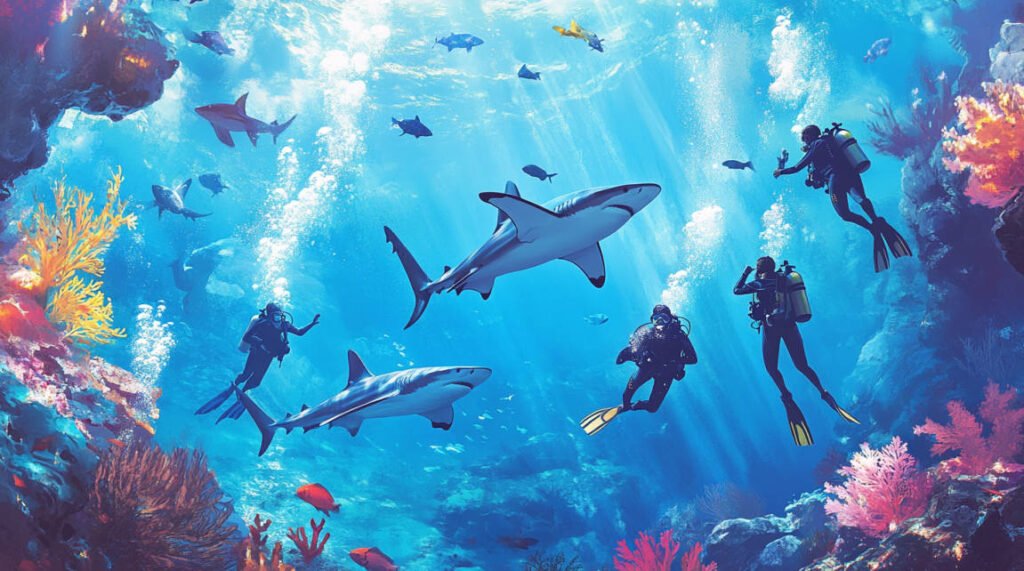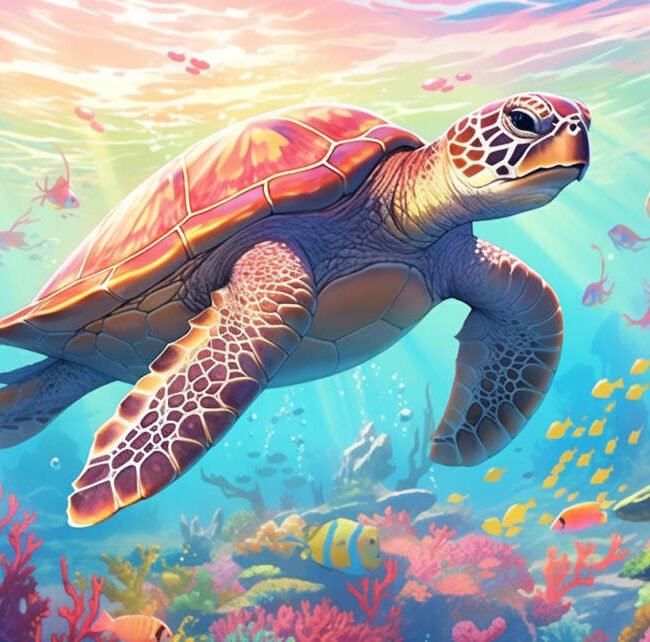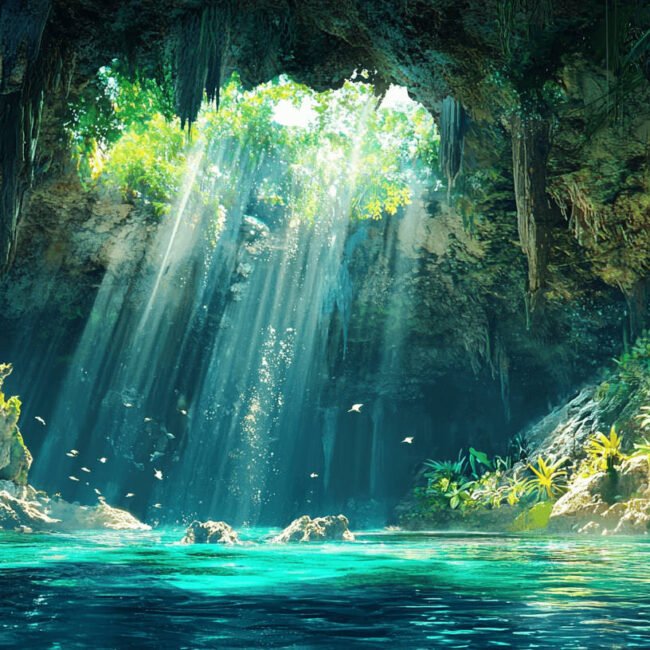Did you know that you’re more likely to be struck by lightning than bitten by a shark? Diving with sharks is an exhilarating experience that many adventurers are adding to their 2025 bucket lists. Yet, misconceptions and fears often hold people back. Let’s dive deep—pun intended—into the truths about shark diving, unveil essential safety tips, and bust those persistent myths! Are you ready to plunge into this adventure with me?
The Reality of Shark Diving: Separating Fact from Fiction
You know, before I ever dipped my toes into shark-infested waters, I had all sorts of wild notions swirling in my head. Blame it on those thriller movies and sensational news stories that paint sharks as ruthless predators out for human blood. But let me tell you, once I took the plunge—literally—all those misconceptions started to melt away.
Common Misconceptions About Shark Diving
One of the biggest myths out there is that sharks are mindless killing machines waiting to attack anything that moves. I used to think that too! I remember my first dive; my heart was pounding like crazy, and I was half-expecting a scene straight out of a horror flick. But guess what? The sharks were more interested in their own business than in me. They weren’t prowling around, eyeing me like a snack. In fact, they seemed almost… indifferent.
Another misconception is that shark diving is an extreme sport reserved for adrenaline junkies with a death wish. Truth is, shark diving can be as safe as any other diving experience when done properly. It’s not about flirting with danger; it’s about observing these majestic creatures in their natural habitat.
Presenting Statistics on Shark-Related Incidents
Let’s talk numbers for a sec. According to the International Shark Attack File, there are only about 60 unprovoked shark attacks on humans worldwide each year. Out of the millions of people who swim and dive annually, that’s a teeny-tiny fraction. Fatalities? Even rarer. You’re statistically more likely to be struck by lightning or get in a car accident on your way to the beach.
I remember reading these stats and thinking, “Seriously? All this fear over such low odds?” It was a real eye-opener and gave me the confidence to explore further.
Emphasizing the Safety Record of Regulated Shark Diving Experiences
Now, when it comes to regulated shark diving, the safety record is stellar. Reputable dive operators follow strict guidelines to ensure both diver and shark safety. They conduct thorough briefings, use appropriate equipment, and have experienced guides who understand shark behavior inside and out.
On my first guided shark dive, I was amazed at how professional and organized everything was. The crew made sure we knew exactly what to do and what not to do. They were like our guardians under the sea, always vigilant and ready to step in if needed. And you know what? The whole experience felt safer than driving on a busy highway.
So, if you’ve been holding back because of fear or misconceptions, maybe it’s time to rethink things. Shark diving isn’t the terrifying ordeal it’s often made out to be. It’s a chance to witness the beauty of the ocean up close and personal, and it’s way safer than most people realize.
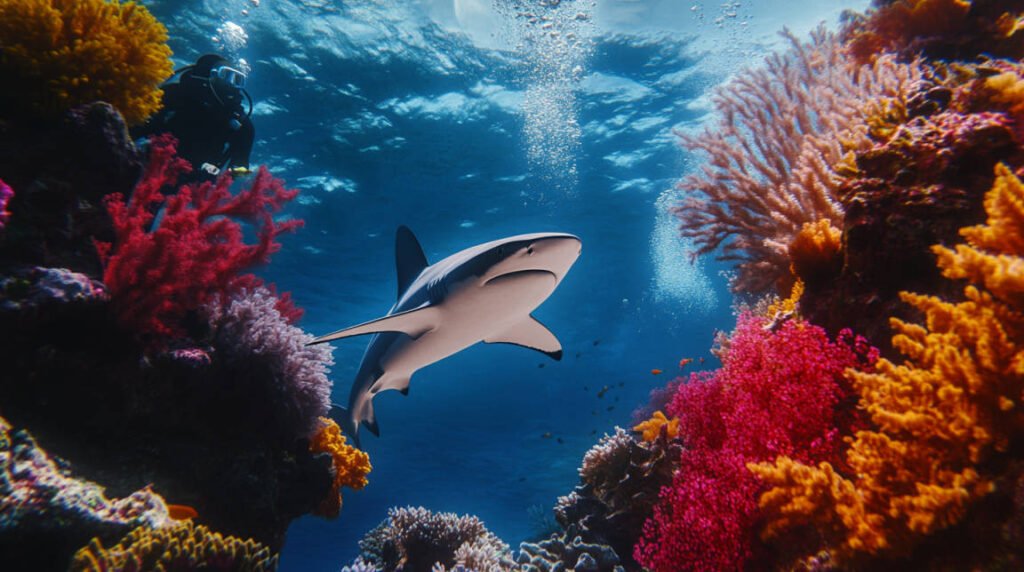
Understanding Shark Behavior: What Divers Need to Know
Alright, so you’re considering taking the plunge, but perhaps you’re wondering what to expect when you finally come face-to-fin with these ocean giants. Understanding shark behavior is key—not just for safety, but to truly appreciate these incredible animals.
Explain Shark Species Commonly Encountered During Dives
Depending on where you dive, you’ll encounter different shark species, each with its own quirks. Common ones include reef sharks, hammerheads, whale sharks, and even the elusive great white if you’re in the right spot.
I once went diving in the Bahamas and came across a group of Caribbean reef sharks. They were sleek, fast, and surprisingly curious. On another trip to Australia, I had the chance to swim alongside a whale shark—the biggest fish in the sea. Talk about a gentle giant! It was so massive yet so peaceful, filtering plankton without a care in the world.
Describe Typical Shark Behavior and Body Language
Sharks communicate a lot through their body language. A relaxed shark will swim smoothly, fins outstretched, moving gracefully through the water. If a shark feels threatened or agitated, it might hunch its back, lower its pectoral fins, or make sudden, jerky movements.
During one dive, I noticed a shark arching its back and zigzagging a bit. Our guide quickly signaled us to give it some space. It was a subtle reminder that, like any wild animal, sharks have their personal boundaries.
Tips on How to Interpret and React to Shark Movements
So, what should you do when a shark approaches? First off, stay calm—easier said than done, I know! Avoid sudden movements or splashing, which can attract attention. Maintain eye contact and keep the shark within your field of vision.
If a shark starts acting erratically, it’s best to slowly back away without turning your back. I learned this during a dive when a curious shark came a bit too close for comfort. Instead of panicking, I remembered to stay composed and slowly moved back towards the group. The shark lost interest and swam away.
Understanding these behaviors not only keeps you safe but also enriches the experience. It’s like learning a new language—the language of the sea.
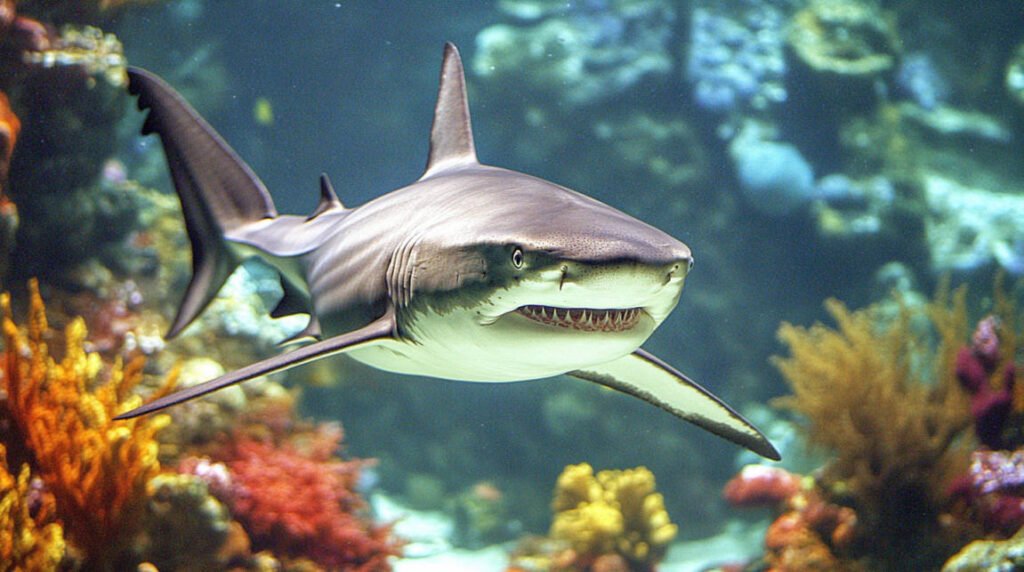
Essential Safety Tips for Diving with Sharks
Now, let’s get down to the nitty-gritty: staying safe while diving with sharks. Trust me, a little preparation goes a long way in making your dive both thrilling and secure.
Importance of Diving with Reputable Operators
First and foremost, always choose a reputable dive operator. These folks know their stuff. They have the experience, the right equipment, and adhere to safety protocols that protect both you and the sharks.
I can’t stress this enough. On one trip, I almost went with a cheaper, less-known outfit to save some cash. A fellow diver warned me against it, and boy, am I glad I listened. The operator I ended up choosing was professional to the core, and the experience was seamless.
Guidelines on Maintaining Calm and Confident Body Language
Sharks are sensitive to body language. They can pick up on erratic movements or signs of distress. So, keep your movements smooth and controlled. Think of yourself as a guest in their home—act respectfully.
During a dive in Fiji, our guide emphasized the importance of appearing confident. “The sharks are watching you as much as you’re watching them,” he said. And it’s true! When you’re calm, the sharks are more likely to be calm too.
Gear Recommendations for Shark Diving
When it comes to gear, a full wetsuit is advisable—not just for warmth, but also for protection against scrapes or stings. Avoid wearing shiny jewelry or bright colors that might catch a shark’s eye.
A good-quality mask and regulator are essential. You want to be comfortable so you can focus on the experience, not on adjusting your gear every few minutes. Some divers opt for a dive knife, but remember, it’s more a tool than a safety device.
And don’t forget an underwater camera if photography is allowed. Capturing those moments can be the highlight of your trip.
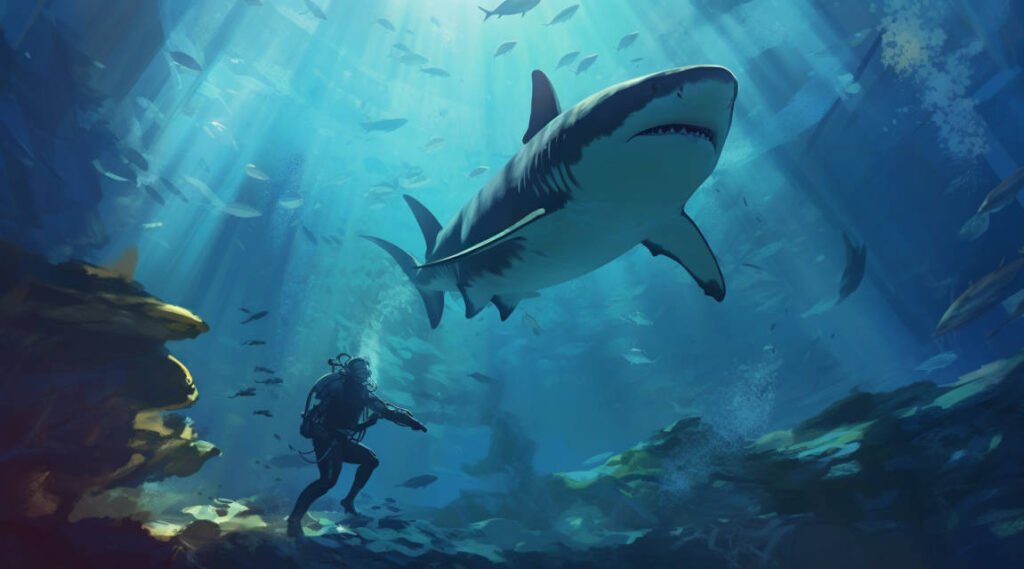
Common Myths About Shark Attacks Debunked
Time to set the record straight on some of the biggest myths surrounding sharks and their interactions with humans.
Address Myths Like Sharks Targeting Humans
First up, the idea that sharks are out there targeting humans like we’re on their menu. This is pure fiction. Sharks do not hunt humans. Most incidents are cases of mistaken identity, where a shark might confuse a surfer or swimmer for a seal or fish.
I used to worry about this myself until I dug into the research. Learning that sharks have no interest in making a meal out of us was a huge relief.
Clarify Misconceptions About Shark Aggression
Another biggie is the notion that sharks are inherently aggressive. While they are apex predators, they’re not the mindless eating machines depicted in movies. Many shark species are actually quite shy and will avoid confrontation.
During my dives, I’ve seen sharks swim away the moment they noticed us. They’re not charging at us or behaving aggressively. In fact, they often seem more scared of us than we are of them.
Provide Scientific Explanations to Counter Myths
Science tells us that sharks play a crucial role in maintaining the health of our oceans. They help control the populations of other species, keeping ecosystems in balance.
Misunderstandings often arise from lack of knowledge. By educating ourselves and others, we can shift the narrative from fear to respect.
I remember attending a marine biology seminar that delved into shark behavior and ecology. It was eye-opening and further fueled my passion for ocean conservation.
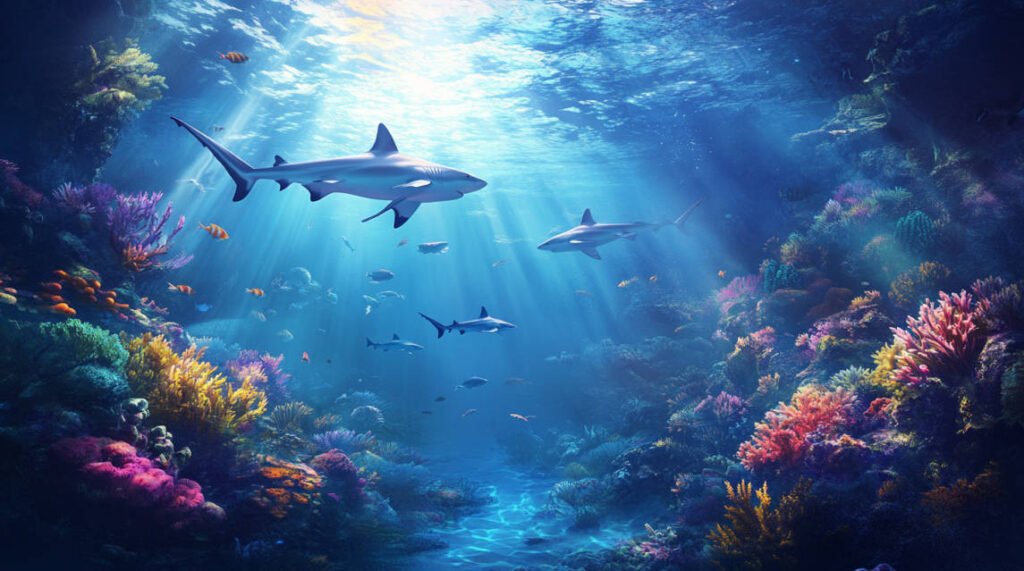
The Best Shark Diving Destinations
You know, picking the perfect spot for shark diving is like choosing your favorite ice cream flavor—there are just too many amazing options! Over the years, I’ve had the chance to dive in some of the most incredible places on Earth, and let me tell ya, each one offers something unique.
Top Locations Worldwide for Shark Diving
- Gansbaai, South Africa This place is known as the “Great White Capital of the World.” If you’re itching to see great whites up close (from the safety of a cage, of course), Gansbaai is the spot.
- Tiger Beach, Bahamas Ever wanted to swim with tiger sharks without a cage? Tiger Beach offers crystal-clear waters and a surreal experience with these striped beauties.
- Beqa Lagoon, Fiji Home to bull sharks, reef sharks, and even tiger sharks, Beqa Lagoon is a diver’s paradise. The vibrant coral reefs are a sweet bonus.
- Cocos Island, Costa Rica This remote island is a hotspot for schooling hammerhead sharks. It’s like being in a live National Geographic documentary!
- Ningaloo Reef, Australia Swimming alongside whale sharks here is pure magic. These gentle giants migrate through the area annually.
Unique Features of Each Destination
- Gansbaai: The thrill of cage diving with great whites is unmatched. The rugged coastline adds to the dramatic vibe.
- Tiger Beach: The shallow depth and clear water make it perfect for photographers. Plus, no cages mean a more intimate encounter.
- Beqa Lagoon: The shark feeds are conducted responsibly, allowing you to observe natural behaviors up close.
- Cocos Island: The sheer number of hammerheads is mind-blowing. The island’s isolation keeps the marine life abundant and pristine.
- Ningaloo Reef: The whale shark migrations offer a peaceful diving experience. The reef itself is teeming with colorful marine life.
Best Times of Year to Visit
- Gansbaai: May to October is prime time for great white sightings.
- Tiger Beach: October to January offers the best conditions.
- Beqa Lagoon: Year-round diving, but April to October has calmer seas.
- Cocos Island: June to December is hammerhead season.
- Ningaloo Reef: March to July is when whale sharks are around.
| Dive Site | Dive Site Features | Viewing Time |
|---|---|---|
| Gansbaai, South Africa | The thrill of cage diving with great whites is unmatched. The rugged coastline adds to the dramatic vibe. | May to October is prime time for great white sightings. |
| Tiger Beach, Bahamas | The shallow depth and clear water make it perfect for photographers. Plus, no cages mean a more intimate encounter. | October to January offers the best conditions. |
| Beqa Lagoon, Fiji | The shark feeds are conducted responsibly, allowing you to observe natural behaviors up close. | Year-round diving, but April to October has calmer seas. |
| Cocos Island, Costa Rica | The sheer number of hammerheads is mind-blowing. The island’s isolation keeps the marine life abundant and pristine. | June to December is hammerhead season. |
| Ningaloo Reef, Australia | The whale shark migrations offer a peaceful diving experience. The reef itself is teeming with colorful marine life. | March to July is when whale sharks are around. |
I remember planning my trip to Ningaloo Reef. I was so stoked to swim with whale sharks that I booked my trip smack dab in the middle of their migration season. And boy, did it pay off!
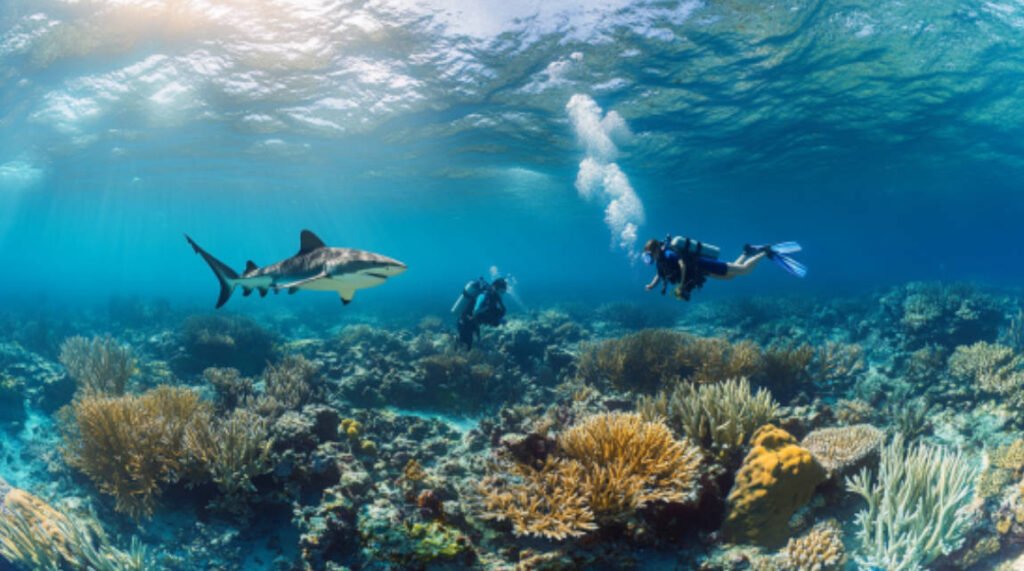
Preparing for Your Shark Diving Adventure
So, you’ve picked your dream destination—awesome! Now, let’s get you ready to make the most of this epic journey.
Physical Fitness and Diving Certification Requirements
First things first, you gotta be in decent shape. You don’t need to be an athlete, but basic fitness helps, especially when dealing with currents or long swims. Most shark dives require at least an Open Water Diver certification.
I remember when I first got certified. The excitement was real, but I quickly realized that being comfortable underwater makes all the difference when a shark cruises by.
What to Expect During a Shark Dive
Expect a thorough briefing before you hit the water. Dive operators will go over safety protocols, hand signals, and what behaviors to watch for. You’ll learn about the types of sharks you might encounter and how to interact—or not interact—with them.
On my first shark dive, I was a bundle of nerves. But once I was underwater, watching these magnificent creatures glide by, all that anxiety melted away. It was pure awe.
Packing Essentials for the Trip
Here’s a quick rundown of what you should pack:
- Documentation: Don’t forget your diving certification card and logbook.
- Gear: While most operators provide gear, bringing your own mask, snorkel, and fins can make you more comfortable.
- Clothing: Pack lightweight, quick-dry clothes, a rash guard, and maybe a light wetsuit depending on water temps.
- Extras: Reef-safe sunscreen, a good underwater camera (you’ll want pics, trust me), and motion sickness pills if you’re prone to seasickness.
I once forgot my underwater camera on a trip to Fiji. Talk about a bummer! The memories are still vivid, but having photos would have been the cherry on top.
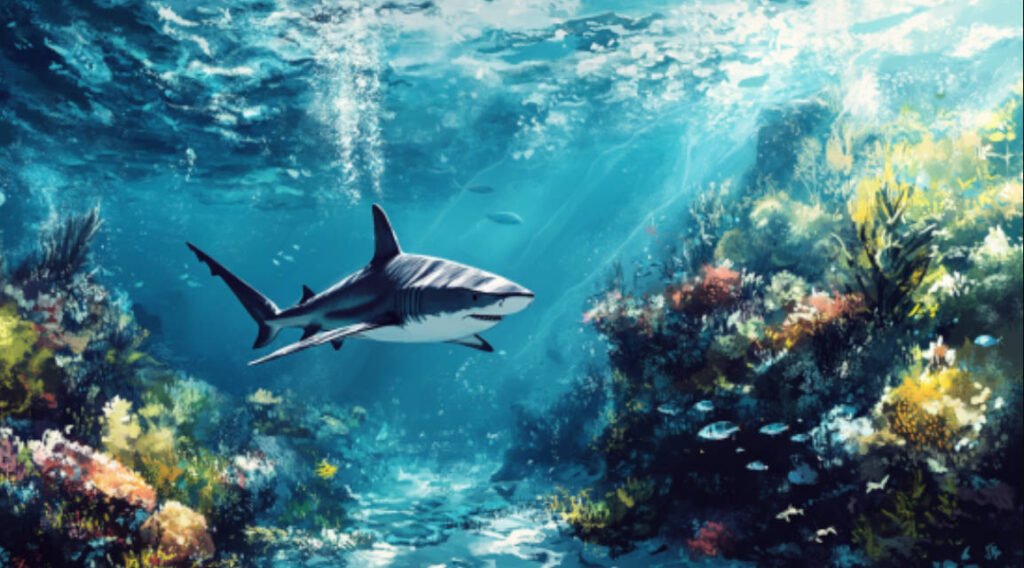
Environmental Impact and Conservation Efforts
Now, let’s chat about something close to my heart—the environmental side of shark diving.
The Role of Shark Diving in Conservation
Believe it or not, shark diving can play a significant role in conservation. By participating in these activities, you’re supporting eco-tourism, which provides financial incentives to protect sharks and their habitats.
I like to think that every dive I do helps shift the narrative from fear to appreciation. It’s a small step, but it’s something.
Promoting Responsible Tourism Practices
Always choose operators who follow ethical guidelines. This means no baiting practices that harm sharks, no touching or harassing wildlife, and adherence to local regulations.
During one trip, I noticed an operator feeding sharks in a way that didn’t seem right. I decided then and there to research companies more thoroughly. Our choices matter.
Highlighting Organizations Working to Protect Sharks
There are some fantastic organizations out there doing crucial work:
- Shark Trust: Focuses on science-based conservation efforts.
- Oceana: Works globally to protect the world’s oceans, including shark conservation.
- Project AWARE: A global movement of divers protecting our ocean planet.
Supporting these organizations, whether through donations or volunteering, can make a real difference.
I once joined a beach cleanup organized by Project AWARE. It felt great to give back, and I met some awesome like-minded folks.
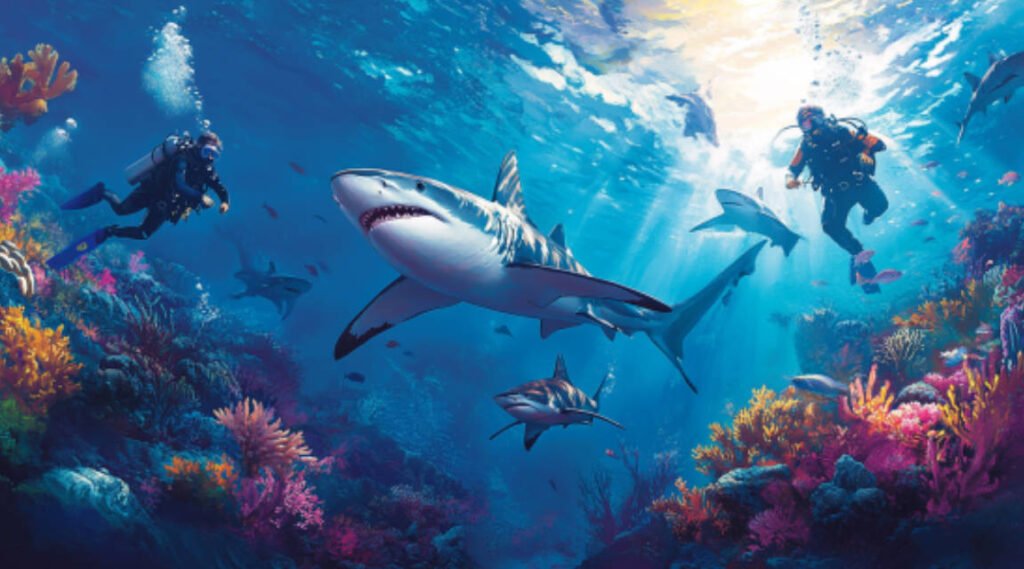
Conclusion
Embarking on a shark diving adventure is more than just an adrenaline rush—it’s an opportunity to connect with one of the ocean’s most misunderstood creatures. By understanding shark behavior and following essential safety tips, you can debunk the myths and experience the thrill safely. So why wait? Dive into the deep, embrace the excitement, and become an advocate for these incredible beings!

